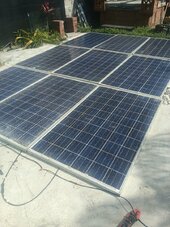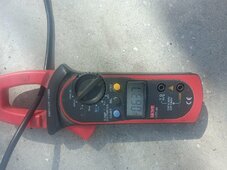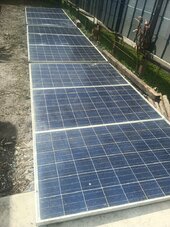One of four things is happening:
1) Your used panels are not performing anywhere near specification.
Confirmation of Voc and Isc are NOT guarantees of proper panel function.
2) your MPPT is insufficient for the size of your array.
This seems unlikely as the subject implies you have a
10kW PowMR with 2X MPPT capable of 5500W each.
3) Your charging + loads are insufficient to draw max power from the array.
You seem to understand this.
4) Your AiO MPPTs are defective.
#1 is the most likely by far and I'm assuming you understand that your maximum power output is going to be at high noon with all other times being lower and that panels RARELY output rated power. Additionally, panels flat on the ground can't produce max power for two reasons, 1) they're going to get hotter than normal and 2) they're not optimally tilted.
If you attach those panels to a different MPPT under the same conditions, they will perform no differently (unless your AiO is defective).
- Are these strings in parallel on 1 MPPT, or are they each on their own?
- Your panels seem to have white sand on them, but in the pictures where they are vertical, it is still visible. What is this? If this isn't debris, I would question if the panels have been damaged. Further support that #1 is the issue.
IMHO, you need to find your bad panels.
I recommend you pick five of the most perfect looking panels and put them 5S on a single MPPT and confirm output at high noon. If you get 70-80% of rated power and the array voltage is close to the calculated Vmp, you have 5 good panels. If not, you have one or more bad panels. Go through the rest of them one at a time adding a 6th panel and confirm you get a 20% boost to power and Vmp. If you fail to get that level of increase, the 6th is bad.
When you buy used panels, you're rolling the dice.








